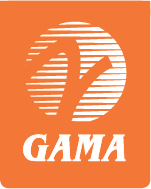|
General Aviation Groups United in Opposition to Air Traffic Control Privatization
Washington, DC — The General Aviation Manufacturers Association (GAMA) today joined five other leading general aviation associations in issuing the following statement in opposition to the air traffic control privatization proposal within the 21st Century Aviation Innovation, Reform and Reauthorization (AIRR) Act:
General Aviation is an important American industry that generates over $219 billion in total economic output, supports 1.1 million jobs, and includes a network of thousands of airports and heliports that connect many rural communities to the rest of the world.
After a thorough and detailed review of Chairman Bill Shuster’s (R-PA) proposal to remove our nation’s air traffic control operations from the Federal Aviation Administration (FAA), we have concluded that these reforms, while well intentioned, will produce uncertainty and unintended consequences without achieving the desired outcomes.
We believe Chairman Shuster has raised the issue of reform in a meaningful and thoughtful manner and while we enjoy the safest most efficient air traffic control system in the world, we also believe that reforms, short of privatization, can better address the FAA’s need to improve its ability to modernize our system.
We have concluded that any structural and governance reforms that require protections for an important sector of users is fundamentally flawed.
In addition, the billions of dollars and time that would be spent transitioning our nation’s air traffic control system to a not-for-profit entity can be better applied to the continuing progress to update and modernize our air traffic control system.
Moreover, with strong bipartisan opposition in both the House and Senate to remove air traffic control operations from the FAA, we believe efforts should focus on developing a long-term FAA Reauthorization that creates the stability and funding necessary and that can reach the President’s desk for signature.
We are committed to addressing needed reforms that create predictable and stable funding for the FAA including biennial budgeting, consolidating unneeded and outdated facilities, procurement, and certification reforms, and putting to use some of the balance from the Airways and Airport Trust Fund to expedite technology deployment. We are ready and willing to work with all industry stakeholders and Congress to advance the consensus needed to improve our current system.
We strongly believe finding agreement on these reform issues will provide the FAA with the tools necessary to ensure that our nation’s air traffic control system remains the envy of the world.
PDF of the joint statement.
For additional information, please contact Sarah McCann, GAMA Director of Communications, at +1 (202) 637-1375 or smccann@gama.aero.
GAMA is an international trade association representing over 100 of the world’s leading manufacturers of general aviation airplanes and rotorcraft, engines, avionics, components and related services. GAMA’s members also operate repair stations, fixed based operations, pilot and maintenance training facilities and manage fleets of aircraft. For more information, visit GAMA’s website at www.GAMA.aero.
|

